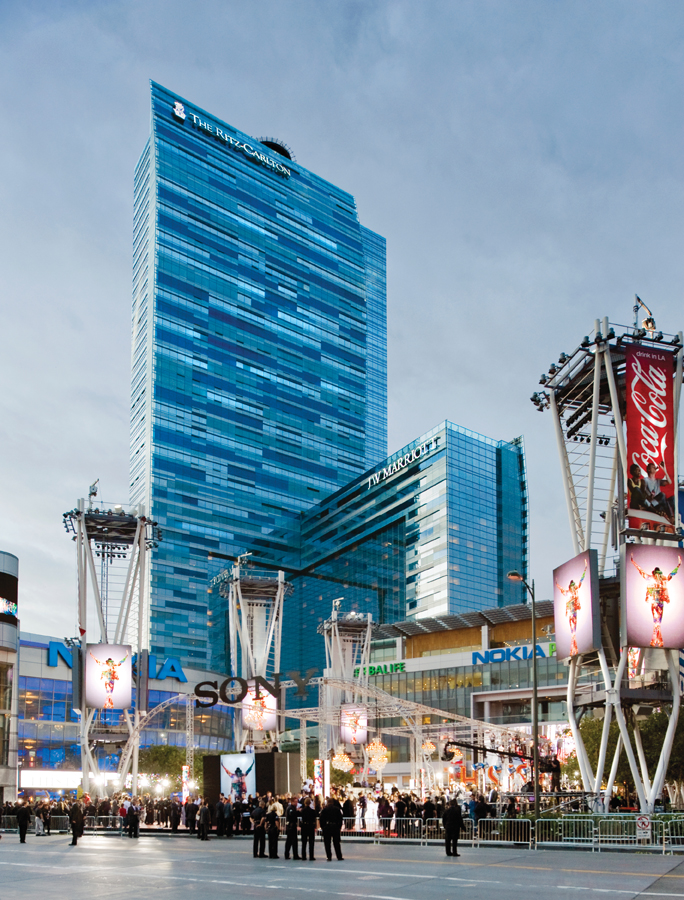There are times when new architecture should pay homage to the old. The Broadway Building’s warm, classic colors and deep roof overhangs are a tip of the hat to the Prairie School and the character of the surrounding neighborhood, while its clean, contemporary lines befit a state-of-the-art structure.
Developer Michael Malone credits the Building Team with creating a structure that “wasn’t confusing” to the mix of occupants and uses in the building. “We were fortunate in that it had exposures on three sides,” says Malone; this enabled the architects, Studio Meng Strazzara, to design separate entrances to cater to each user group. The Broadway side serves as the retail gateway and also has a commercial entrance where tenants and visitors can walk up or take the elevator to the offices. The international students at the community college can access their apartments from the north side, while the non-student residential entrance is on the east side, facing a large city park and playing fields.
An underdeveloped industrial area, though, calls for something fresh and exciting that will bring crowds back to the city. L.A. LIVE might well be the epicenter of entertainment in downtown Los Angeles today, but 10 years ago, all you’d find on the site were warehouses and parking lots.
After completing the Staples Center in 1999, Anschutz Entertainment Group spent another decade transforming the adjacent 33 acres into a 24/7 community where people can live, work, and play. Sporting events, concerts, televised events such as the American Music Awards, shopping, dining, nightlife, office space—L.A. LIVE has it all, and there’s more in the pipeline. Plans call for 850 residential units, 222 hotel rooms, and 1.4 million square feet of additional sports and entertainment venues.
“AEG wanted to create a center for downtown Los Angeles,” says Jay Clark, vice president of the architectural firm RTKL. “They kept referring to it as the new Times Square.” RTKL interpreted that cue to create a two-acre, central plaza surrounded by contemporary buildings. The firm also designed and master-planned the 7,100-seat Nokia Theater, as well as the AEG Building, with offices, restaurants, nightclubs, and bowling alleys, along with the ESPN Building, home to the sports network’s West Coast broadcasting facility.
“There was an interesting discussion early on, because the Staples Center was established as this modern metal-panel-and-glass structure,” says Daun St. Amand, an RTKL vice president who worked with Clark on L.A. LIVE. “Yet the client’s taste is very Art Deco.” Eventually modern won out, and the result is a vibrant-looking project with interconnected sidewalks, streets, and paseos leading through the plaza to each venue.
A similar design morphing took place at The Meridian at Grosvenor Station. The project started out as a classic design with traditional materials, but the Paradigm Cos. made “a conscious effort to bring it up to more of a modern, contemporary look,” says Joe Schneider, of the Lessard Group. The Building Team used cast stone and metal panels at the base and upper levels and brick in between, with fingers of metal accenting the brick. “I think it caters to our market: young 25- to 35-year-olds who are looking for that hip or cool architecture,” says Ewart.
Schneider used an H shape for the building that allows eight corner units per floor plate, compared to six for a standard U-shaped courtyard building. “In an H-shaped building, the courtyards aren’t as deep and you get better views and more light and air,” he says.
The distinctive look of 2000 N. Milwaukee’s exterior comes from its blend of masonry, limestone, steel, and glass, accented by a curved façade and glass balconies that thrust from the corner of the building in a dramatic cantilever. HPA kept the building height to four stories, an appropriate scale for the neighborhood. While undeniably contemporary, 2000 N. Milwaukee echoes the triangular shape of older flatiron buildings in Chicago’s Logan Square. “The overall goal, when this corner got redeveloped,” says Alessandro, “was to create a kind of gateway into the neighborhood along the Milwaukee retail corridor.” Mission accomplished.







